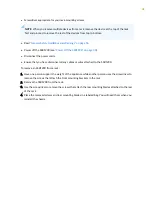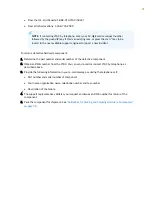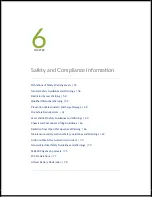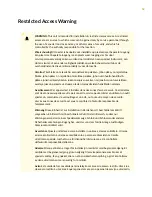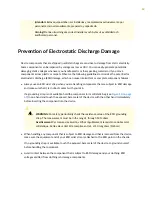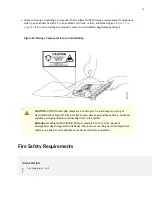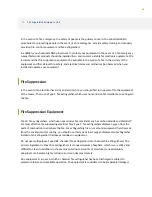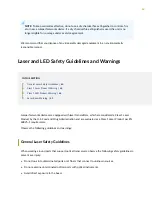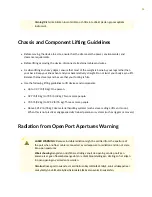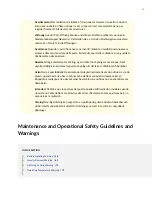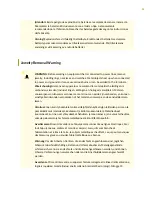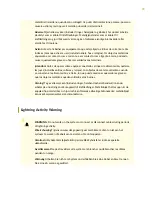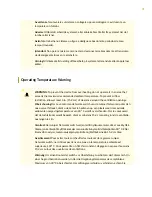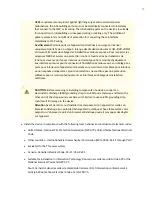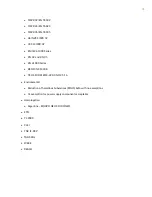
Fire Suppression Equipment | 62
In the event of a fire emergency, the safety of people is the primary concern. You should establish
procedures for protecting people in the event of a fire emergency, provide safety training, and properly
provision fire-control equipment and fire extinguishers.
In addition, you should establish procedures to protect your equipment in the event of a fire emergency.
Juniper Networks products should be installed in an environment suitable for electronic equipment. We
recommend that fire suppression equipment be available in the event of a fire in the vicinity of the
equipment and that all local fire, safety, and electrical codes and ordinances be observed when you
install and operate your equipment.
Fire Suppression
In the event of an electrical hazard or an electrical fire, you should first turn power off to the equipment
at the source. Then use a Type C fire extinguisher, which uses noncorrosive fire retardants, to extinguish
the fire.
Fire Suppression Equipment
Type C fire extinguishers, which use noncorrosive fire retardants such as carbon dioxide and Halotron™,
are most effective for suppressing electrical fires. Type C fire extinguishers displace oxygen from the
point of combustion to eliminate the fire. For extinguishing fire on or around equipment that draws air
from the environment for cooling, you should use this type of inert oxygen displacement extinguisher
instead of an extinguisher that leaves residues on equipment.
Do not use multipurpose Type ABC chemical fire extinguishers (dry chemical fire extinguishers). The
primary ingredient in these fire extinguishers is monoammonium phosphate, which is very sticky and
difficult to clean. In addition, in the presence of minute amounts of moisture, monoammonium
phosphate can become highly corrosive and corrodes most metals.
Any equipment in a room in which a chemical fire extinguisher has been discharged is subject to
premature failure and unreliable operation. The equipment is considered to be irreparably damaged.
62

